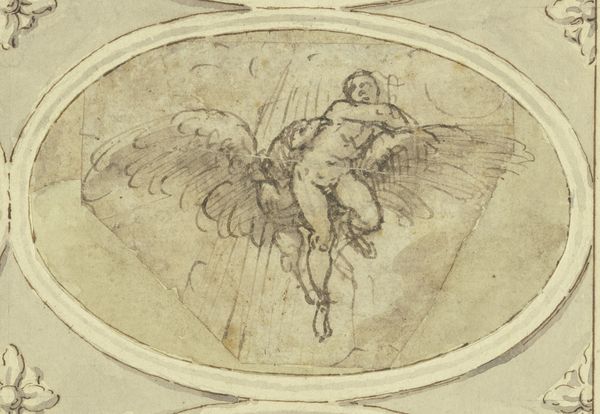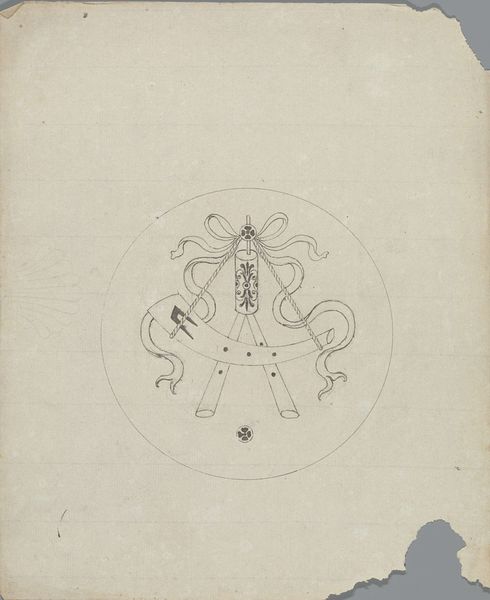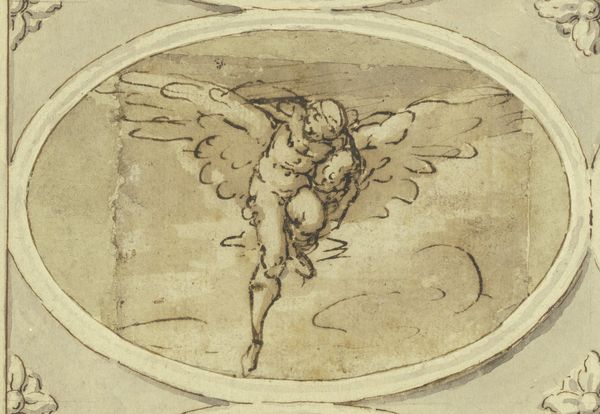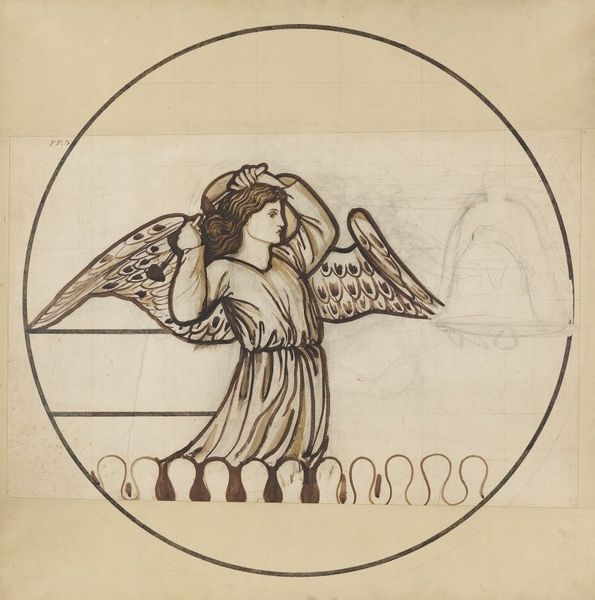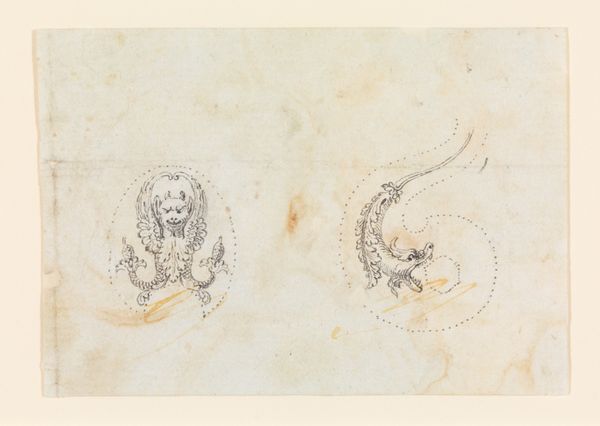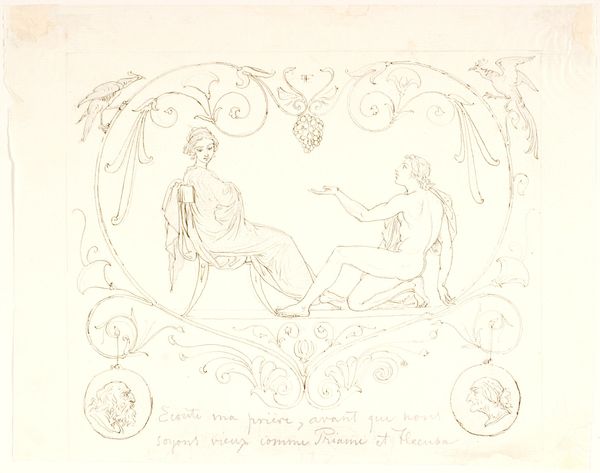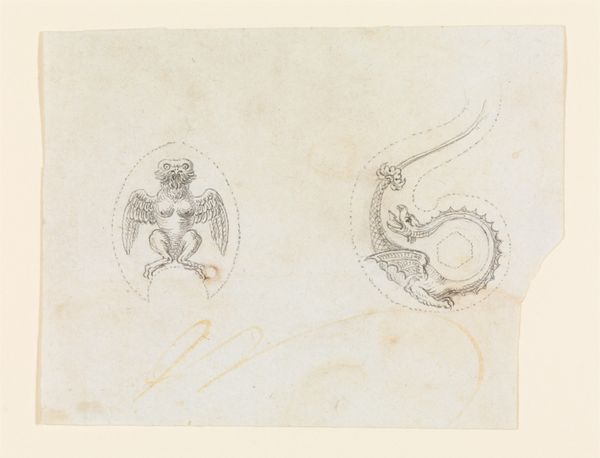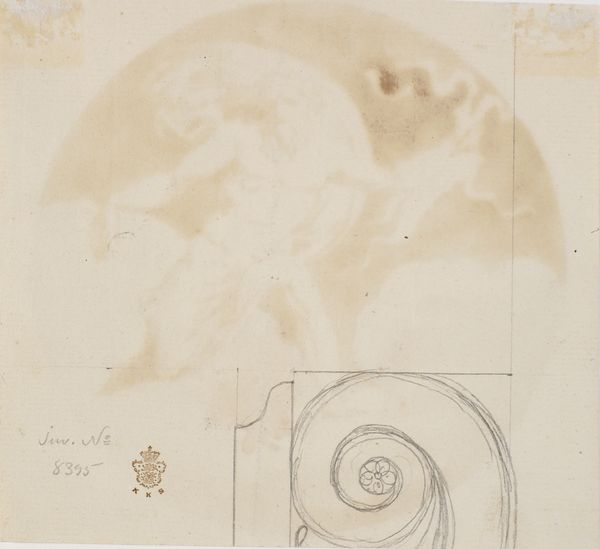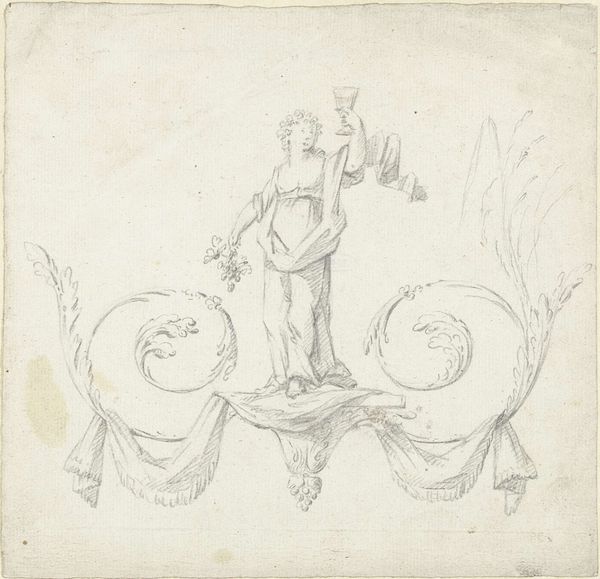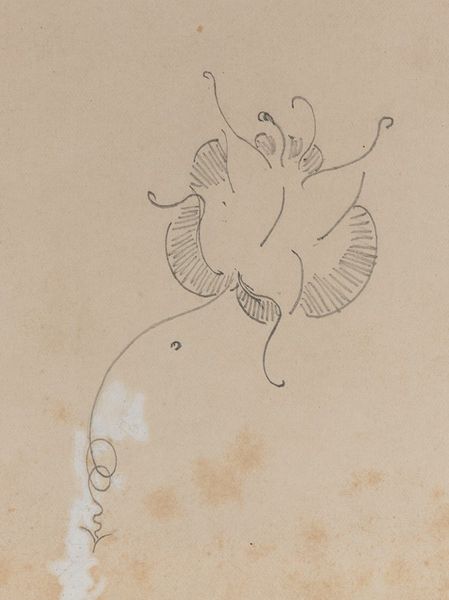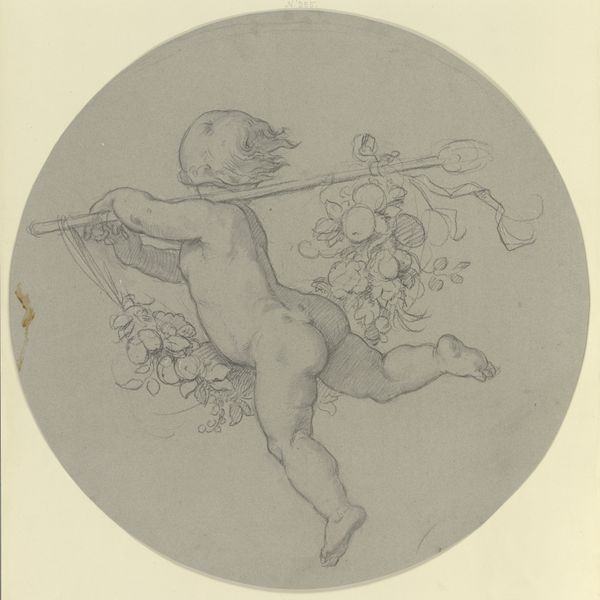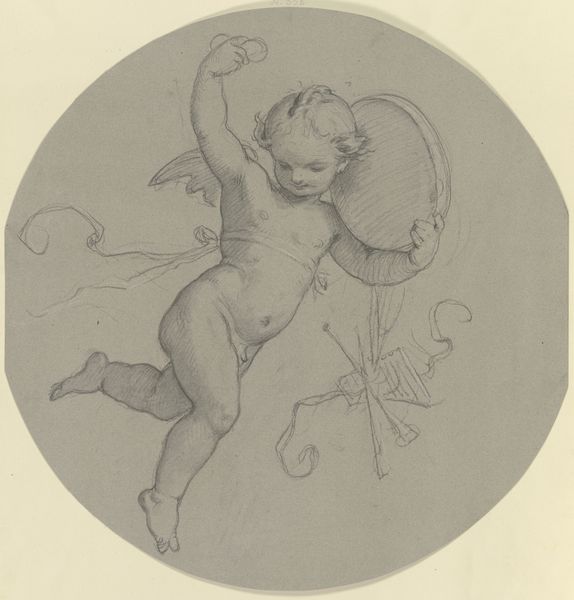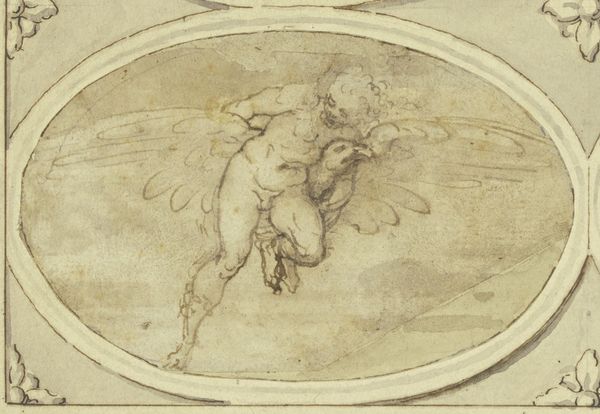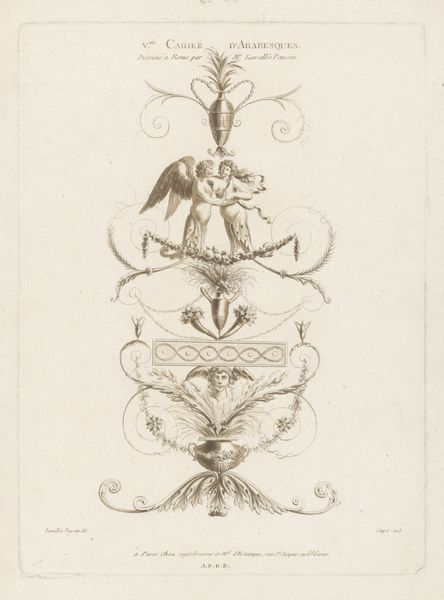
En vinget genius, svævende over en klode, angivet med et par cirkelbuer 1743 - 1809
0:00
0:00
Dimensions: 201 mm (height) x 235 mm (width) (bladmaal)
Editor: We're looking at "A Winged Genius Hovering Over a Globe, Indicated by a Pair of Circular Arcs," a pencil drawing on paper created between 1743 and 1809 by Nicolai Abildgaard. The delicate lines and somewhat unfinished quality give it an ethereal feel. How do you interpret the artist's choices in terms of composition and technique? Curator: I appreciate your initial observations regarding the ethereal quality, directly linked to the artist's technique. Note how the figure’s dynamic pose, coupled with the globe’s rudimentary depiction, generates a fascinating tension between movement and stasis, precision and ambiguity. Do you observe anything in the treatment of light and shadow? Editor: It looks like he only hinted at shading, perhaps to emphasize the form, rather than volume? I see the faintest marks inside the globe, and small darker marks under the angel. It almost feels as though he wants us to focus on the overall design rather than minute details. Curator: Precisely. Consider how Abildgaard strategically uses line weight and density. Observe the thicker lines that delineate the figure's contours versus the faint suggestions of the wings. Notice also the strategic placement of the figure in relation to the globe and frame. In what manner might this deliberate imbalance of detail create visual tension and direct our gaze? Editor: It draws attention to the genius’s energy against the flatness of the globe, perhaps highlighting the contrast between the ideal and the real, or the ethereal and the grounded. I didn’t notice it until you asked. Thanks! Curator: And by reducing the globe to bare arcs, the work foregrounds the central tension within its construction: how Abildgaard explores ideas of form, structure, and dynamism solely through a visual language of lines, tone, and strategically deployed detail. A fascinating work.
Comments
No comments
Be the first to comment and join the conversation on the ultimate creative platform.
